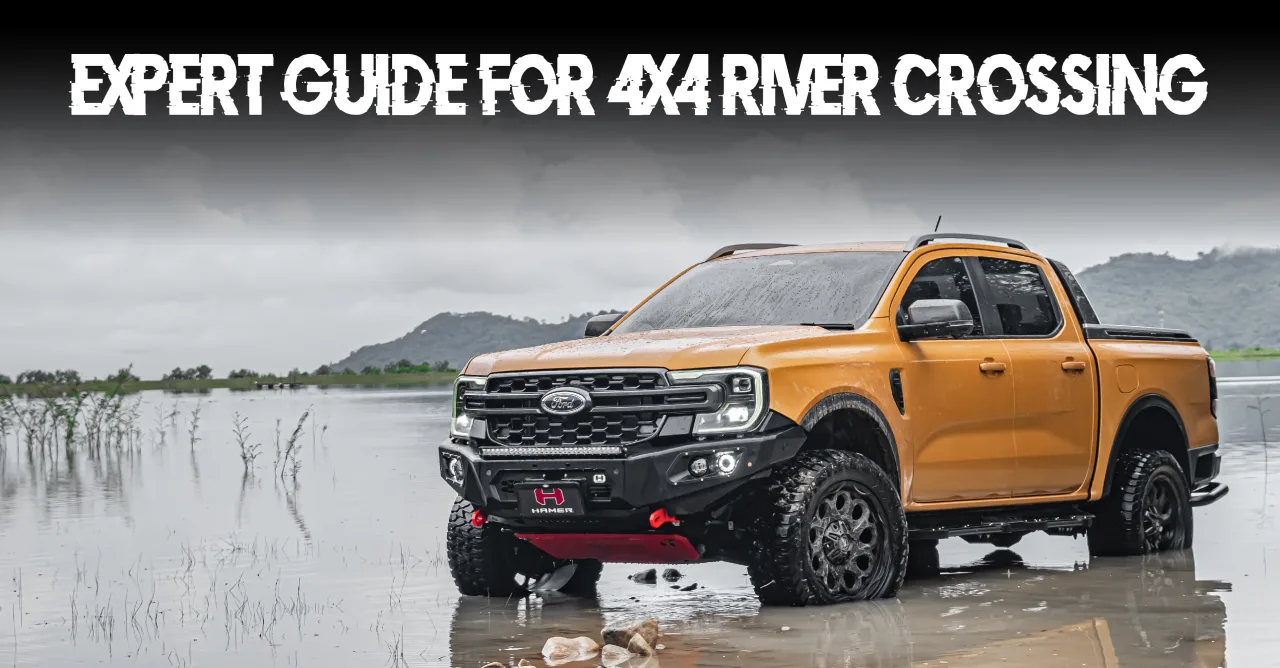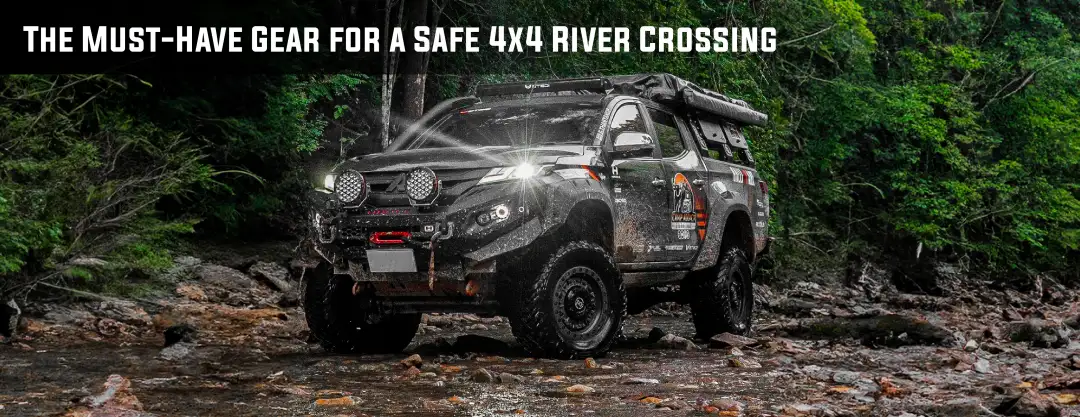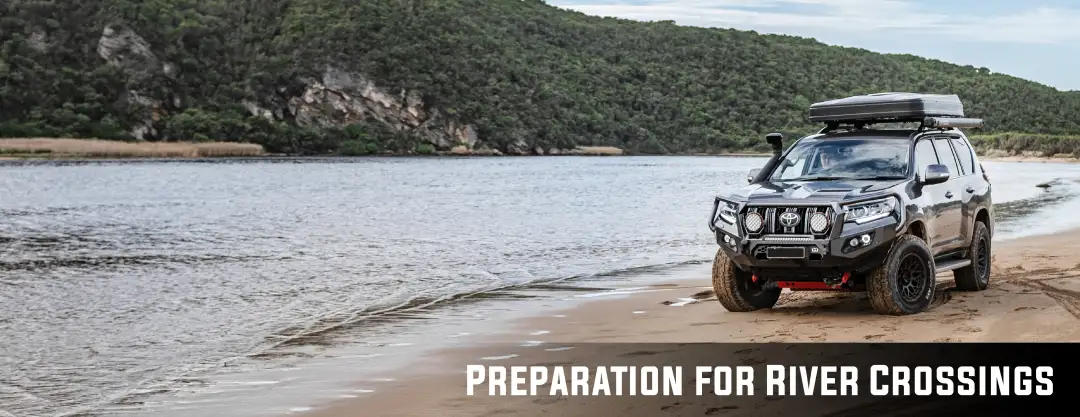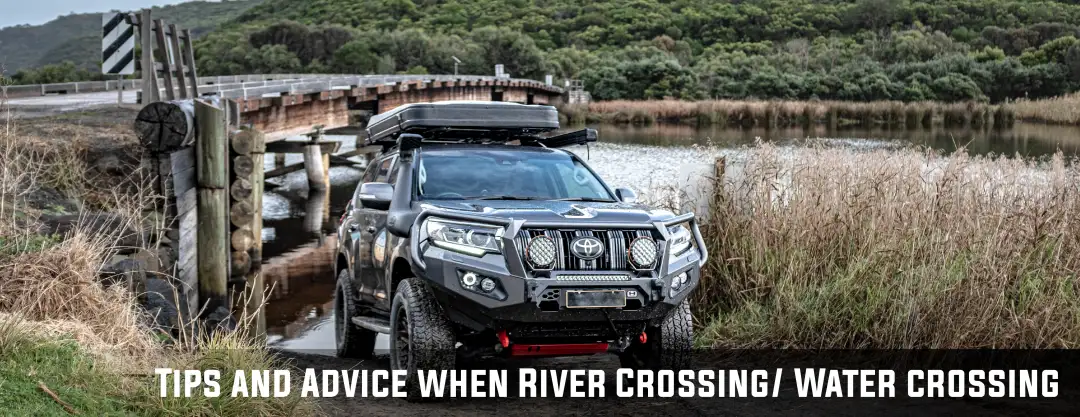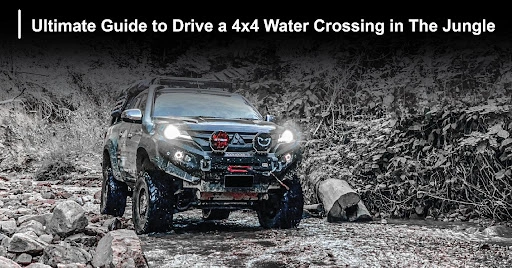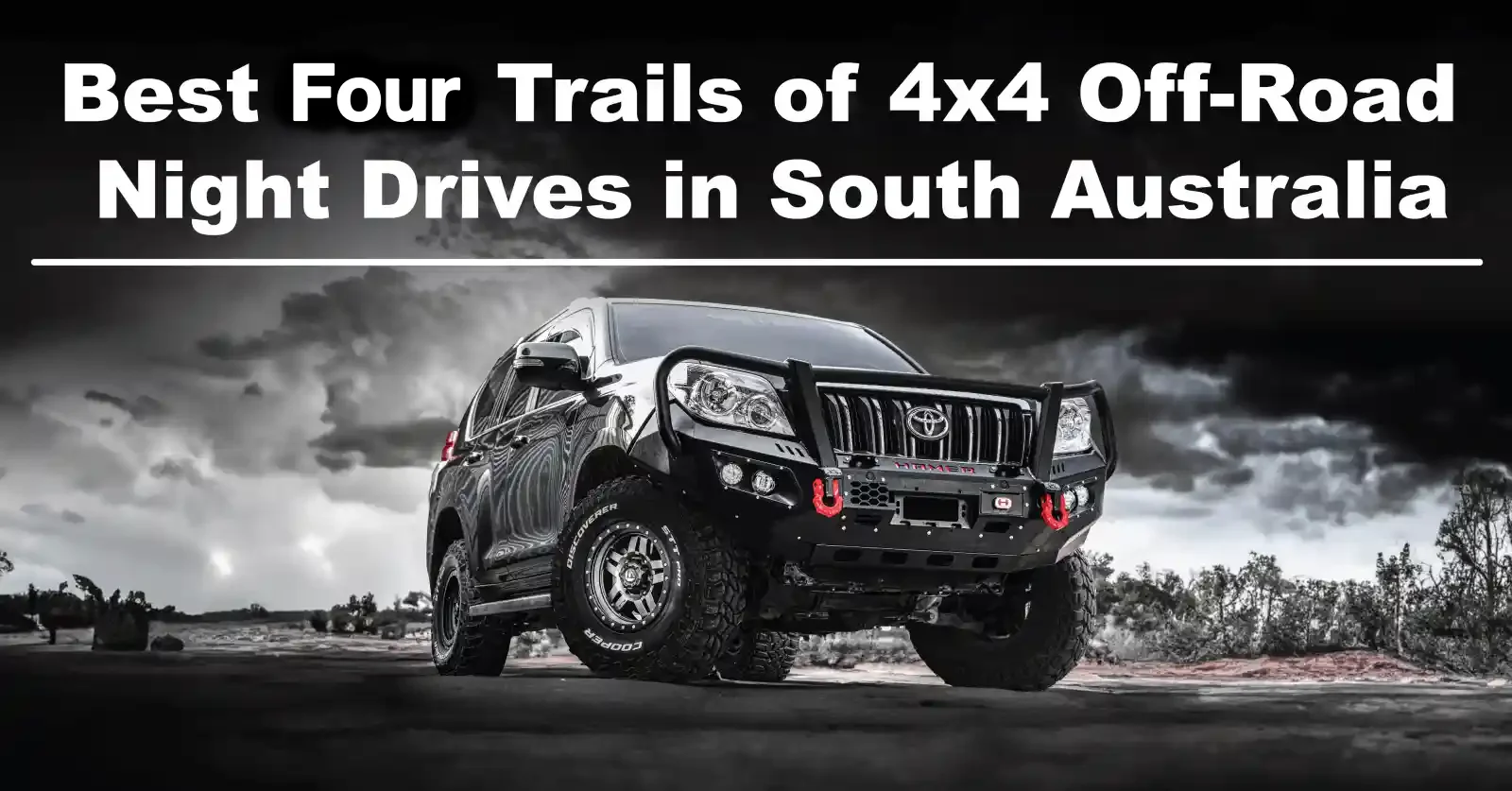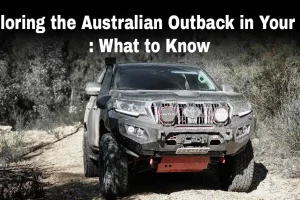NEWS & ACTIVITY
Expert Guide For 4×4 River Crossing
Navigating river crossings with your 4×4 can be one of the most exhilarating experiences for any adventurer.
The gush of water against the wheels and the challenging terrains indeed makes for a heart-pounding experience.
However, this thrill comes with its share of perils. It necessitates meticulous preparation and the deployment of the right equipment and accessories to ensure safety.
In this guide, we delve deep into the essential tips and accessories that are indispensable for a successful 4×4 river crossing expedition. You can also learn more about the water crossing here.
The Must-Have Gear for a Safe 4×4 River Crossing
-
Snorkels
Functionality and Benefits:
Installing a snorkel facilitates clean air intake during dusty trails and safeguards your engine against water ingress during river crossings.
Acts as a cost-effective insurance for your vehicle’s engine, shielding it from potential damages during river crossings.
Selection Tips:
Opt for air and water-tight snorkels to prevent any chance of water getting into the system, which could otherwise result in catastrophic engine damage.
Consult with experts or refer to trusted resources to make the right choice when purchasing a snorkel for your vehicle.
-
Differential (Diff) Breathers
Preventing Vacuum Effect: Rapid temperature fluctuations can create a vacuum effect, allowing water to penetrate your vehicle’s differential, potentially causing severe damage.
The Solution: Diff breathers act like snorkels for your differentials, countering the vacuum effect caused by temperature changes during river crossings. Regular maintenance and inspection of diff breathers are essential for optimal functionality during your expedition.
-
Under Vehicle Protection (UVP)
UVP or skid plates shield your vehicle’s underbody from potential damage that underwater rocks and other obstacles may inflict.
Investing in a quality UVP system helps ensure your vehicle’s safety and durability during river crossings.
Seek guidance from the experts of Hamer 4×4 to choose a UVP system that aligns with your vehicle’s specifications and the nature of your adventure.
-
Recovery Gear
For Emergencies: River crossings can be unpredictable, and sometimes, you need to get yourself or others out of a tough spot. To handle unforeseen challenges, equip yourself with recovery gear such as snap straps, shackles, and a winch.
Choosing the Right Gear: Consult experts or experienced off-roaders to ensure you have the appropriate recovery gear for your vehicle and the specific conditions you may encounter during river crossings.
-
Roof Racks
Carrying Essentials: A roof rack provides extra storage space for essential gear and equipment. This is particularly valuable for longer journeys or when you need to transport additional supplies.
Selecting the Ideal Rack: Choose a roof rack that matches your vehicle’s dimensions and weight capacity. Hamer 4×4 offers a range of roof racks, including CLASSIC, LUNAR, and SOLAR, designed to suit different needs.
Preparation for River Crossings
Vehicle Cool Down:
Before attempting crossing, turn off the engine and allow your vehicle to cool down for at least five minutes to prevent thermal shock and sudden contractions of vital components and your vehicle’s drivetrain that can be caused by sudden exposure to cold water.
Developing a habit of letting hot components cool down goes a long way in maintaining the longevity and health of your vehicle.
While waiting for your vehicle to cool down, utilize the time to assess the surroundings and strategize your crossing plan based on the terrain and the specific conditions of the river.
Environment Assessment
A visual examination of the river provides insights into the river bed’s composition and aids in making an informed decision.
Conducting a preliminary assessment of the river, such as its depth, flow speed, deep holes, and other potential obstacles, is pivotal for determining a safe path.
In instances where the water is murky and lacks visibility, you may want to consider walking across the river to gauge the water depth and scan the terrain for any potential hazards that can pose challenges or danger.
Taking the time to assess the environment properly will help prevent unforeseen accidents and damage to your vehicle and help ensure a safe crossing.
Understanding Water Ripples
Observing white ripples in the water indicates the presence of rocks close to the surface.
Strategizing your path based on the ripple patterns will help you maintain a safe distance from large rocks that can potentially damage your vehicle.
Observing water ripples will significantly help you navigate through the water crossing safely.
Tips and Advice when River Crossing/ Water crossing
Tire Pressure Adjustments:
Learning the art of tyre pressure management could be a game-changer in ensuring a safe river crossing experience.
Always carry a tire pressure gauge to maintain proper tire pressure throughout your adventure.
Optimal tire pressure helps facilitate better traction and reduces the risk of getting stuck.
Depending on your vehicle and terrain, adjusting the tire pressure between 18 and 24 PSI will provide greater traction and control during the crossing.
Transmission:
Familiarize yourself with your vehicle’s transmission to help efficiently manage it during a river crossing.
Ensure that the vehicle is in good condition to avoid gear-related issues in the midst of the crossing.
If your 4×4 vehicle has a manual transmission, avoid changing gear while crossing to ensure consistent traction and help maintain momentum.
Shifting gears while crossing water can result in the vehicle getting bogged, making it challenging to get it moving again.
Usage of Rear Diff Lock:
Experienced drivers often recommend the use of the rear differential lock to enhance the safety quotient during river crossings.
Utilizing the rear diff lock will significantly enhance the traction on unpredictable surfaces, facilitating stability during the crossing while navigating through challenging underwater terrain.
Appropriate Speed
Maintaining enough speed is vital; however, avoid wheel spin to help ensure steady speed. This is especially crucial in deep water crossings, bow wave, and mud filled terrains.
Recovery Strategy
Always have proper recovery tools readily accessible to facilitate a swift response in case of emergencies. Being prepared with recovery tools like snap straps and clearly understanding your vehicle’s recovery points is crucial. Collaboration and teamwork can play a vital role in successful recovery operations during river crossings. Quick response to emergencies can potentially prevent substantial damage to the vehicle and ensure the safety of the occupants.
Conclusion
4×4 river crossings offer a thrilling yet challenging adventure for enthusiasts. Embarking on this journey requires a harmony of the right gears, preparedness, and knowledge to navigate through turbulent waters safely. Remember, every water crossing is different, necessitating a unique approach based on its characteristics and specific terrains. As you gear up for your next 4×4 river crossing adventure, ensure to equip yourself with these few tips from us and essential accessories.
Adopting a safety-first approach combined with the right equipment can pave the way for a successful and exhilarating river crossing experience. Hamer products offer industry-leading off-road gear and accessories to maximize your vehicle’s performance, ensuring safe water crossings and allowing you to enjoy the ultimate thrill of your next adventure. Follow us on Facebook to get newsletter and promotions!



































































































